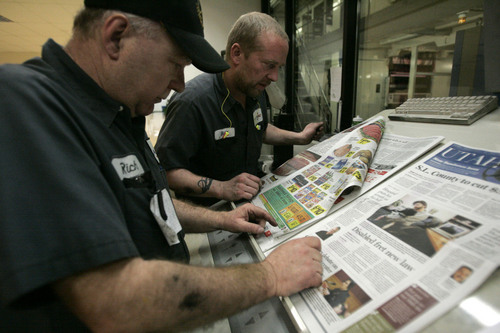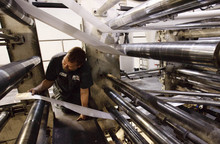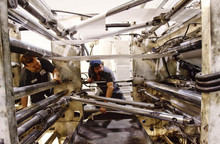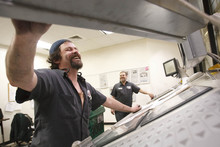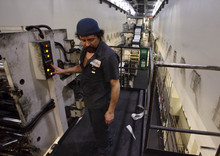This is an archived article that was published on sltrib.com in 2013, and information in the article may be outdated. It is provided only for personal research purposes and may not be reprinted.
A new agreement between The Salt Lake Tribune and the Deseret News gives substantially more of the profits from their jointly owned business operations to the LDS Church-owned News than it previously had received, federal documents show.
In a deal that also sold The Tribune's stake in printing facilities and other assets used by both of Salt Lake City's daily newspapers to the News, The Tribune's corporate owners have agreed to take a 30 percent share of profits generated from the newspapers' print versions, down from the 58 percent share The Tribune had enjoyed for decades.
Notably, the revised operating agreement also enshrines new protections for newsroom operations and editorial voice of The Tribune, viewed by many as a crucial watchdog in a state where The Church of Jesus Christ of Latter-day Saints is the dominant institution.
In exchange for selling facilities and negotiating a new profit split, Digital First Media, which manages MediaNews Group, The Tribune's parent company, also has received an undisclosed sum of cash and full rights to control and reap profits from sltrib.com and other digital initiatives. In the deal, The Tribune acquired a sales and technical development staff that had previously worked for the newspapers' jointly owned company, MediaOne of Utah. The Deseret News split off its digital operations from MediaOne in a 2011 amendment to the operating agreement.
"The Salt Lake Tribune remains profitable under this deal, and it takes control of the only growing thing in the business — the digital piece," Digital First Media Chief Executive John Paton said Thursday.
Today, The Tribune's digital revenue is substantially less than that generated by its print edition.
But Paton said the deal was in keeping with a chain-wide strategy of divesting assets from the print legacy of newspapers to focus on rapidly growing revenue from publishing platforms such as the Web, handheld mobile devices and social-media networks.
The Deseret News' purchase of the West Valley City printing facility came as the assessed value of the building and land was plummeting. County records show the property's total value dropped from $39 million in 2008 to $17 million this year.
By slashing such legacy costs now, getting control of the newspapers' digital destiny and using resulting cash to pay down corporate debt, Paton said, "for me it was a triple win."
Clark Gilbert, CEO and president of the Deseret News and Deseret Digital, did not respond to an email seeking comment. Brent Low, MediaOne president, also did not respond.
All parties to the deal had previously sought to keep its major provisions secret. But the pact is subject to review by anti-trust lawyers with the U.S. Department of Justice, which provided a copy of the filing to The Tribune on Thursday.
Though the deal gives up Tribune money and controls on the business side, the pact now includes language intended to safeguard its editorial independence.
The new Joint Operating Agreement (JOA) blocks any moves by the News or its church owners to shut down The Tribune, interfere with newsroom decisions, scale back its news space or how often it publishes — without consent from at least one of two board members representing The Tribune on a newly constituted five-member management board.
The Tribune and the News had previously each elected two members to a four-member board.
And even if the 61-year-old partnership between the two media outlets were to fall apart, the contract guarantees The Tribune access to reasonable lease rates on News-controlled printing presses.
One newspaper analyst said the new 70-30 profit split was a surprise.
John Morton said the smaller Tribune share probably reflected Paton's conviction that printed newspapers are dying out in the face of Internet competition and that news publishing will inexorably give way to distribution of information, stories and photos on digital platforms.
"That may be true," Morton said in an email, "but I suspect it's going to take a lot longer than Paton and others believe. Overall, this is a good deal for the Deseret News.''
The two newspapers were among the first in the country to enter into a joint business operation with separate newsrooms in 1952. A half-dozen such pacts are now in U.S. cities where two newspapers still operate, under provisions of the Newspaper Preservation Act of 1970.
The Tribune became part of MediaNews Group in 2000 after a complicated financial manuever four years before by the former majority owners, the McCarthey family, which sought to reap profits from selling the newspaper while retaining control over its management and the right to buy it back.








